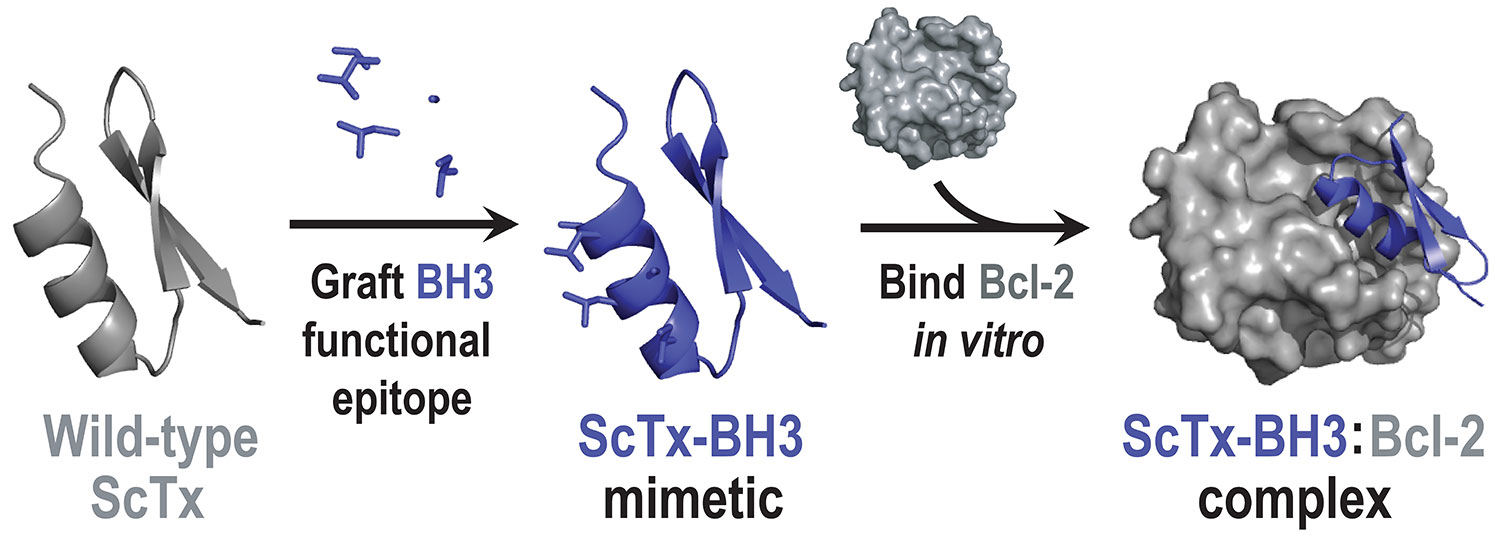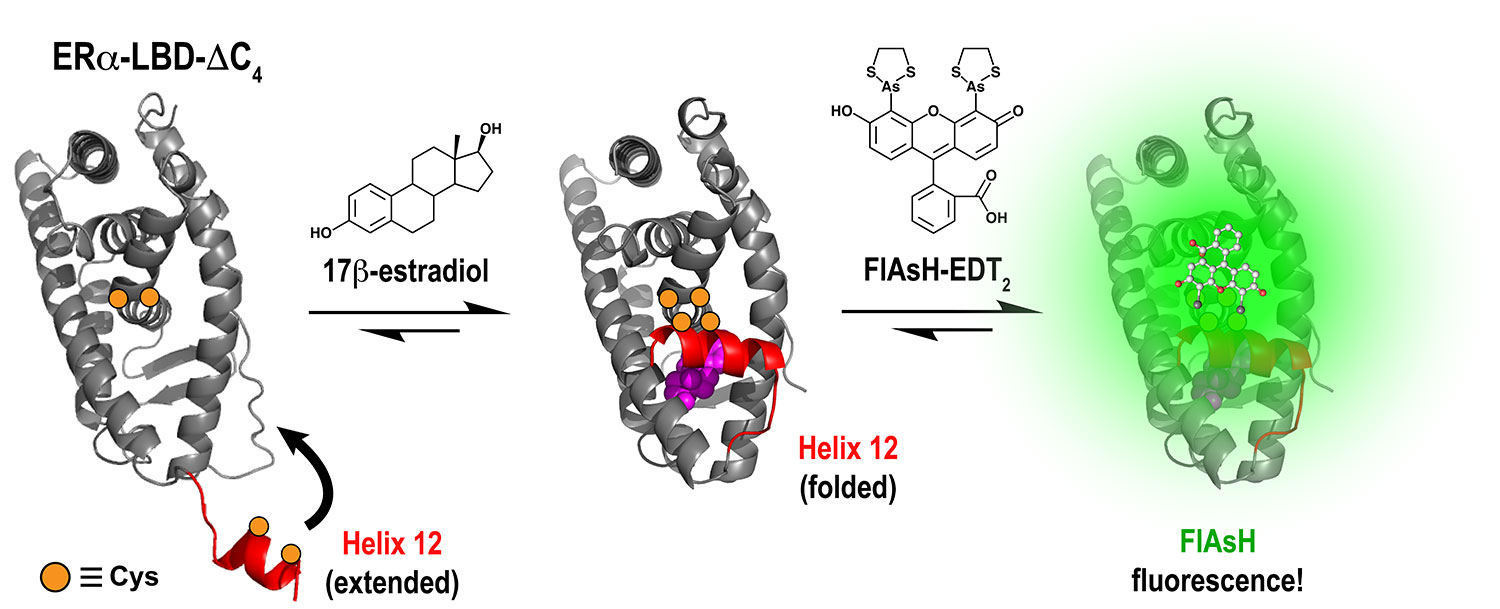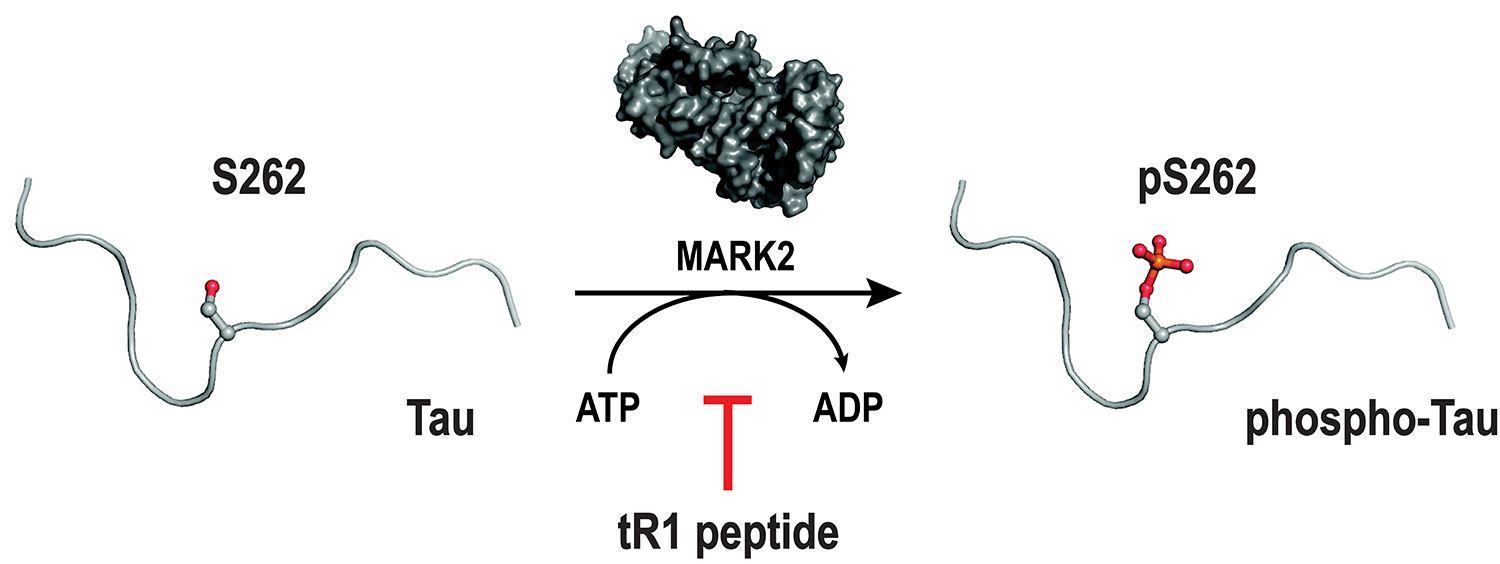Research in the Holub Laboratory

The Holub Lab investigates questions that span multiple fields, including chemistry, biochemistry, molecular biology, medicine and biophysics. Students in the Holub Laboratory use multidisciplinary approaches to understand the fundamental nature of protein-protein interactions (PPIs) and use this knowledge to develop next-generation therapeutics. Our strategy involves the use of synthetic organic chemistry in conjunction with a wide range of biochemical, molecular biological and computational research techniques to design unique tools that can be used to study the nature of therapeutically-relevant biomolecular interactions. Our goals include both the development of new chemical biology tools and the application of existing technology, such as chemical genetics, structural data and spectroscopy to gain insight into the molecular nature of PPIs. While students in the Holub Laboratory come from many diverse scientific backgrounds, they all become experts in developing such tools and performing experimental techniques to better understand the fundamental nature of protein interaction events. Whether their passion is organic synthesis, structural biology, protein engineering or cell biology, students find conducting research in the Holub Laboratory at once fun, challenging and rewarding. Alumni of the Holub Laboratory are well-prepared for leadership positions in academia, national laboratories, professional programs, biotechnology industries and consulting firms. Further information about our current and past lab members can be found here.
Re-engineering miniature proteins
 Proteins that function through non-covalent interactions with other biomolecules (nucleic acids, lipids, carbohydrates or other proteins) constitute a significant portion of the proteome. However, large-scale biomolecular interactions are often difficult to target with small molecule ligands. Recent evidence has indicated that such interactions can effectively be inhibited using peptides and small proteins that mimic the physicochemical properties of the binding interface. Indeed, such
‘synthetic biologics’ possess enormous potential
as tools for fundamental and applied research and can, in theory, be developed into therapeutics that target protein interaction surfaces. Using a technique called protein grafting, our group has developed a unique class of synthetic scaffold based on the small, well-folded protein scyllatoxin (ScTx) that targets BH3-binding sites within anti-apoptotic Bcl2 proteins. Using ScTx-BH3 domain mimetics as molecular tools, our lab studies how structural flexibility of the BH3 helix affects its ability to target anti-apoptotic Bcl2 proteins in vitro. Furthermore, we are using these constructs to facilitate cytochrome c release from mitochondria isolated from cell lines that display anti-apoptotic phenotypes. Our ultimate goal is to gain an in-depth understanding of the factors that govern molecular recognition between proteins within the Bcl2 family and to apply this knowledge to developing highly specific inhibitors of the BH3:Bcl2 interaction.
Proteins that function through non-covalent interactions with other biomolecules (nucleic acids, lipids, carbohydrates or other proteins) constitute a significant portion of the proteome. However, large-scale biomolecular interactions are often difficult to target with small molecule ligands. Recent evidence has indicated that such interactions can effectively be inhibited using peptides and small proteins that mimic the physicochemical properties of the binding interface. Indeed, such
‘synthetic biologics’ possess enormous potential
as tools for fundamental and applied research and can, in theory, be developed into therapeutics that target protein interaction surfaces. Using a technique called protein grafting, our group has developed a unique class of synthetic scaffold based on the small, well-folded protein scyllatoxin (ScTx) that targets BH3-binding sites within anti-apoptotic Bcl2 proteins. Using ScTx-BH3 domain mimetics as molecular tools, our lab studies how structural flexibility of the BH3 helix affects its ability to target anti-apoptotic Bcl2 proteins in vitro. Furthermore, we are using these constructs to facilitate cytochrome c release from mitochondria isolated from cell lines that display anti-apoptotic phenotypes. Our ultimate goal is to gain an in-depth understanding of the factors that govern molecular recognition between proteins within the Bcl2 family and to apply this knowledge to developing highly specific inhibitors of the BH3:Bcl2 interaction.
Surveying protein dynamics
 Our group is also interested in using bisarsenical dyes to study ligand-mediated dimerization and helix transitions of the human estrogen receptor (hER). Bisarsenical dyes such as FlAsH-EDT2 and ReAsH-EDT2 selectively label peptides or proteins containing tetracysteine motifs via thiol-arsenic exchange reactions, converting non-fluorescent 1,2-ethanedithiol (EDT)-bound forms into highly fluorescent tracers. Due to their small size, these molecules impart little steric bulk to the protein of interest, improving overall spatial and kinetic resolution. Protein-protein interactions or folding of a peptide chain can bring cysteine pairs into close proximity, facilitating the labeling of the tetracysteine motif. Importantly, the profluorescent nature of the bisarsenical dye allows the extent of protein interaction or folding to be quantified as a function of fluorescence intensity. A critical step in the design of therapeutic modulators of the hER involves evaluating their influence on receptor dimerization and structural transitions within the ligand-binding domain (LBD). Reliable methods to screen such dynamic events would greatly enhance our understanding of how specific ligands affect hER activity and would be advantageous in developing new therapeutics targeting the hER. Using interdisciplinary techniques such as organic synthesis and protein engineering, our group employs bisarsenical dyes to monitor ligand-mediated structural transitions within the hER-LBD. We seek to apply this technology to high-throughput screens that test large numbers of lead compounds for their ability to modulate receptor dimerization and affect structural changes within the hER.
Our group is also interested in using bisarsenical dyes to study ligand-mediated dimerization and helix transitions of the human estrogen receptor (hER). Bisarsenical dyes such as FlAsH-EDT2 and ReAsH-EDT2 selectively label peptides or proteins containing tetracysteine motifs via thiol-arsenic exchange reactions, converting non-fluorescent 1,2-ethanedithiol (EDT)-bound forms into highly fluorescent tracers. Due to their small size, these molecules impart little steric bulk to the protein of interest, improving overall spatial and kinetic resolution. Protein-protein interactions or folding of a peptide chain can bring cysteine pairs into close proximity, facilitating the labeling of the tetracysteine motif. Importantly, the profluorescent nature of the bisarsenical dye allows the extent of protein interaction or folding to be quantified as a function of fluorescence intensity. A critical step in the design of therapeutic modulators of the hER involves evaluating their influence on receptor dimerization and structural transitions within the ligand-binding domain (LBD). Reliable methods to screen such dynamic events would greatly enhance our understanding of how specific ligands affect hER activity and would be advantageous in developing new therapeutics targeting the hER. Using interdisciplinary techniques such as organic synthesis and protein engineering, our group employs bisarsenical dyes to monitor ligand-mediated structural transitions within the hER-LBD. We seek to apply this technology to high-throughput screens that test large numbers of lead compounds for their ability to modulate receptor dimerization and affect structural changes within the hER.
Developing therapeutic peptides
 Peptides represent a growing class of therapeutic that occupy a unique chemical space between small molecules and large proteins. Peptides act as intrinsic signaling molecules for many biochemical pathways and thus hold potential to be developed as inhibitors (or potentiators) of such pathways for therapeutic intervention. Our group is currently involved in two projects that focus on the development of therapeutic peptides. In the first project, we are working to use peptides derived from the R1 domain of the microtubule-associated protein tau to target and inhibit the microtubule affinity regulating kinase MARK2. Our laboratory has recently developed tR1, a sequence-based peptide mimetic of the tau R1 domain that inhibits the MARK2-mediated phosphorylation of tau. The tR1 peptide not only holds promise to act as a novel peptide-based kinase inhibitor, but also as a molecular tool that can be used to map tau-interaction sites within proteins that target the tau R1 domain. We aim to use this knowledge in developing next-generation therapeutics for the treatment of tauopathies including Alzheimer’s disease and frontotemporal dementia. In the second project, we are working to develop peptide-based antagonists of the human growth hormone receptor (hGHR). This work involves the development of short, helical peptides that mimic the site-1 interacting helix (S1H) of the human growth hormone (hGH). Our S1H peptides have been shown to inhibit hGH-mediated phosphorylation of STAT5 in cancer cell lines and are being developed as full-spectrum inhibitors of hGH action. Our goal here is to apply such peptides in the treatment of diseases associated with hyperactive hGH/hGHR signaling, including cancer and acromegaly.
Peptides represent a growing class of therapeutic that occupy a unique chemical space between small molecules and large proteins. Peptides act as intrinsic signaling molecules for many biochemical pathways and thus hold potential to be developed as inhibitors (or potentiators) of such pathways for therapeutic intervention. Our group is currently involved in two projects that focus on the development of therapeutic peptides. In the first project, we are working to use peptides derived from the R1 domain of the microtubule-associated protein tau to target and inhibit the microtubule affinity regulating kinase MARK2. Our laboratory has recently developed tR1, a sequence-based peptide mimetic of the tau R1 domain that inhibits the MARK2-mediated phosphorylation of tau. The tR1 peptide not only holds promise to act as a novel peptide-based kinase inhibitor, but also as a molecular tool that can be used to map tau-interaction sites within proteins that target the tau R1 domain. We aim to use this knowledge in developing next-generation therapeutics for the treatment of tauopathies including Alzheimer’s disease and frontotemporal dementia. In the second project, we are working to develop peptide-based antagonists of the human growth hormone receptor (hGHR). This work involves the development of short, helical peptides that mimic the site-1 interacting helix (S1H) of the human growth hormone (hGH). Our S1H peptides have been shown to inhibit hGH-mediated phosphorylation of STAT5 in cancer cell lines and are being developed as full-spectrum inhibitors of hGH action. Our goal here is to apply such peptides in the treatment of diseases associated with hyperactive hGH/hGHR signaling, including cancer and acromegaly.